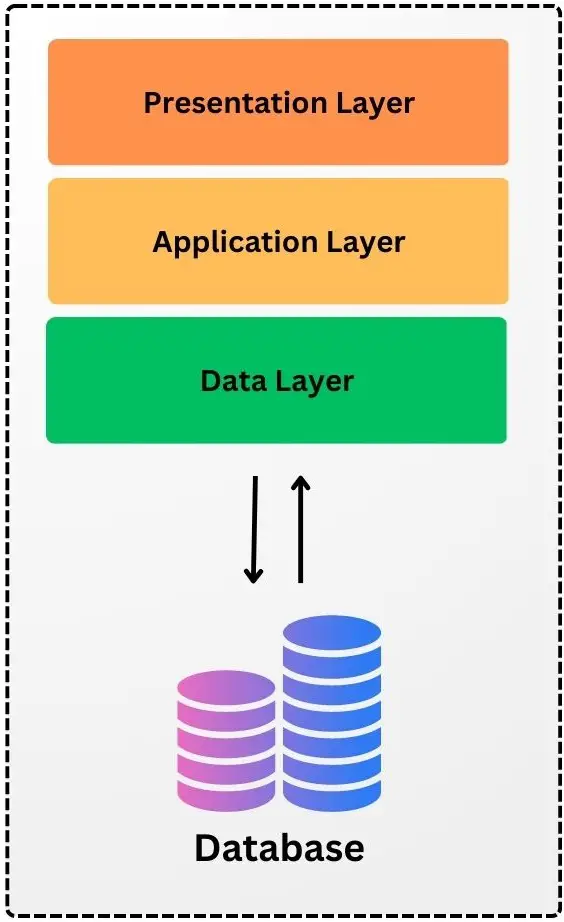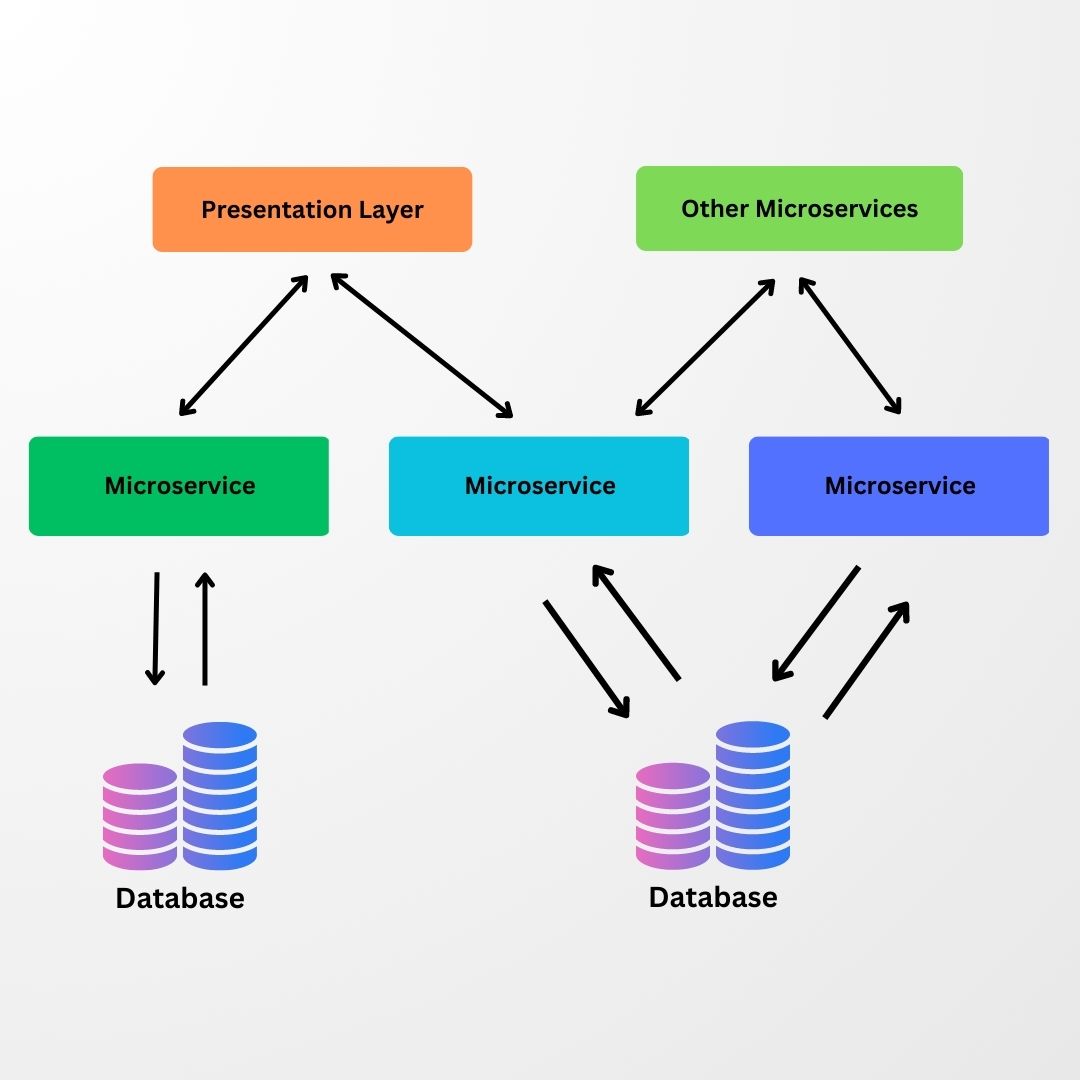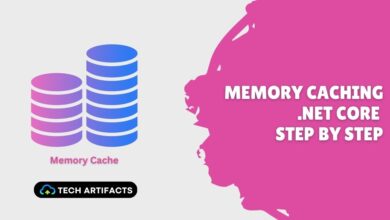Microservices vs. Monolithic Architecture: Which One Fits Better?

In today’s digital age, choosing the right architecture is critical to the success of your web application. Microservices vs. Monolithic Architecture are two popular choices, each with its own set of advantages and disadvantages. In this blog, We will explore the key differences between Microservices and Monolithic Architecture in this blog and help you determine which one better fits your web app.
Introduction to Web Apps Architectures
Web applications are a critical component of today’s business landscape. They allow organizations to reach and engage with customers, provide self-service capabilities, and streamline operations. A well-designed web app can help companies achieve their business goals, while a poorly designed one can lead to user frustration, decreased performance, and a loss of revenue.
One of the key decisions that developers need to make when building web apps is the choice of architecture. Two main architectures that are used in web app development are Monolithic Architecture and Microservices Architecture.
Monolithic architecture involves building an application as a single, self-contained unit. This architecture has been the standard for web app development for many years. It typically consists of three layers: the presentation layer, the application layer, and the data layer. The presentation layer handles the user interface, the application layer contains the business logic, and the data layer stores and manages data.
In contrast, Microservices architecture involves building an application as a collection of small, independent services. Each service is responsible for a specific function, and they communicate with each other via APIs. This architecture has become increasingly popular in recent years due to its flexibility, scalability, and fault tolerance.
In this blog post, we’ll provide a comparison of monolithic and microservices architecture for web applications. We’ll discuss the advantages and disadvantages of each architecture and provide examples of successful companies that use each approach. We’ll also provide guidance on how to choose the right architecture for your web app project and provide best practices for migrating from monolithic to microservices architecture.
What is Monolithic Architecture?
Monolithic architecture is a traditional approach to building web applications. In this architecture, the entire application is built as a single, self-contained unit.
Monolithic architecture is a software architecture pattern where an application is built as a single, self-contained unit. This means that all the components of the application, including the user interface, business logic, and database, are tightly coupled together.
Let’s take a closer look at the components of monolithic architecture.

The diagram above shows the components of Monolithic Architecture in Web Apps. Monolithic architecture typically consists of three layers:
- Presentation Layer: This layer handles the user interface, including the HTML, CSS, and JavaScript code. The presentation layer communicates with the application layer to retrieve and display data from the application.
- Application Layer: This layer contains the business logic of the application, including the code that processes user input, interacts with the database, and generates output. The application layer communicates with both the presentation layer and the data layer.
- Data Layer: This layer stores and manages data used by the application. It includes a database and a database management system (DBMS) such as MySQL, Oracle, or SQL Server. The data layer communicates with the application layer to retrieve and store data.
In a monolithic architecture, these three layers are tightly coupled together. For example, if the business logic in the application layer needs to retrieve data from the database, it sends a query to the data layer using a database access library such as JDBC or ADO.NET. The data layer then executes the query and returns the results to the application layer, which processes the data and sends it to the presentation layer to display to the user.
This tight coupling between the layers can make it difficult to maintain and update the application over time. For example, if a change is made to the database schema, all layers of the application may need to be updated to accommodate the change.
Advantages of Monolithic Architecture
1. Simplicity
Monolithic architecture is a straightforward approach to building web applications. Since all components are tightly coupled together, it is easy to develop and deploy.
2. Easy to Develop and Deploy
Monolithic applications are relatively simple to build and test in a local environment before deploying them to production. The simplicity of this architecture means that there are fewer moving parts to manage, which can save time and effort.
3. Familiarity
Monolithic architecture is a traditional approach to building web applications that have been in use for decades. Developers and IT teams are likely to have experience working with this architecture, making it easier to maintain and troubleshoot.
Disadvantages of Monolithic Architecture
1. Limited Scalability
Monolithic applications can be difficult to scale horizontally because all components are tightly coupled together. This means that if a single component of the application is experiencing high traffic, the entire application may need to be scaled up, even if other components are not experiencing high traffic.
2. Difficulty in Maintaining and Updating
Monolithic applications can be difficult to maintain and update because any changes to one component can potentially affect the entire application. This can result in longer deployment times and higher costs for bug fixes and updates.
3. Potential Single Point of Failure
Monolithic applications have a single codebase, which means that if one component fails, the entire application can go down. This can result in costly downtime and lost revenue.
4. Lack of Flexibility
Monolithic applications can be less flexible than other architectures. Since all components are tightly coupled together, it may be difficult to swap out one component for another without affecting the entire application.
5. Limited Technology Stack
Monolithic applications are often built using a limited technology stack since all components must be able to communicate with each other seamlessly. This can limit the types of technologies that can be used in the application.
In summary, monolithic architecture is a simple and familiar approach to building web applications that has its advantages and disadvantages. While it is easy to develop and deploy, it can be difficult to scale and maintain over time. It may also be less flexible than other architectures and can be limited in terms of the technology stack.
What is Microservice Architecture?
Microservices Architecture is a software development approach that structures an application as a collection of small, independent services that communicate with each other via APIs. Each microservice is responsible for performing a specific business function, such as processing payments or managing user authentication, and can be deployed independently of the others.
Let’s take a closer look at the components of Microservice Architecture.

In a microservices architecture, the application is composed of many independent services that communicate with each other over a communication layer. Each service is responsible for a specific business function and can be deployed independently of the others. The communication layer is responsible for handling requests between the services.
The data stored in a microservices architecture can be decentralized or centralized. Decentralized storage means that each service has its own database, while centralized storage means that all services use the same database.
Advantages of Microservices Architecture
1. Scalability
Microservices architecture is highly scalable. Each service can be scaled independently of the others, allowing for more efficient use of resources and better performance under high traffic conditions.
2. Flexibility
Microservices architecture allows for greater flexibility in terms of the technology stack. Since each service is independent, it can be built using a different technology stack than the others, as long as it can communicate with the others over the communication layer.
3. Independent Deployment
Microservices architecture allows for the independent deployment of services. This means that updates and bug fixes can be deployed to individual services without affecting the entire application.
4. Resilience
Microservices architecture is inherently more resilient than monolithic architecture because if one microservice fails, it does not affect the rest of the application. This means that the application can continue to function even if some of its services are temporarily unavailable.
Disadvantages of Microservices Architecture
1. Complexity
Microservices architecture can be more complex than other architectures. With many independent services communicating with each other, it can be difficult to manage the overall architecture. Additionally, the communication layer between services must be carefully designed and implemented.
2. Higher Development and Deployment Costs
Microservices architecture can be more expensive to develop and deploy than other architectures. Each service must be developed and tested independently, and the communication layer between services must be carefully designed and tested. Additionally, deployment can be more complex because of the need to manage many independent services.
Monolithic vs Microservices Architecture
Now that we have studied in detail about both architectures, let’s do a quick comparison of both on various important parameters.
1. Scalability
Scalability is the ability of an application to handle an increasing number of users or requests without a drop in performance.
Monolithic architecture has limited scalability because all the components are tightly coupled. Scaling one component of the application requires scaling the entire application. This can lead to overprovisioning of resources and higher costs.
Microservices architecture, on the other hand, has better scalability because each service can be scaled independently. This allows for better resource utilization and lower costs.
2. Maintainability
Maintainability is the ability of an application to be easily modified or updated.
Monolithic architecture has limited maintainability because all the components are tightly coupled. A change to one component of the application can affect other components. This can make it difficult to maintain and update the application.
Microservices architecture, on the other hand, has better maintainability because each service is independent. A change to one service does not affect other services. This makes it easier to maintain and update the application.
3. Deployment
Deployment is the process of releasing an application to production.
Monolithic architecture has a simple deployment process because there is only one executable or codebase to deploy. However, deploying a new version of the application requires deploying the entire application, which can be time-consuming and risky.
Microservices architecture has a more complex deployment process because there are multiple services to deploy. However, deploying a new version of a service does not require deploying the entire application. This makes the deployment process faster and less risky.
4. Performance
Performance is the ability of an application to respond to user requests quickly.
Monolithic architecture can have slower performance because all the components are tightly coupled. This can lead to a slower response time for user requests.
Microservices architecture can have faster performance because each service is independent. This allows for better resource utilization and faster response times for user requests.
Choosing the Right Architecture for Your Web App
In the above section, we have compared the two architectures in terms of scalability, maintainability, deployment, and performance. The choice between monolithic and microservices architecture depends on the specific needs of the application. Monolithic architecture is simpler and easier to develop and deploy, but it has limited scalability and maintainability. Microservices architecture is more complex and expensive to develop and deploy, but it has better scalability and maintainability.
Choosing the right architecture for your web app is a crucial decision that can impact your app’s success in the long run. Here are some factors that you can consider before making a decision –
- The complexity of the application: If your application is simple, has limited functionality, and has a small user base, monolithic architecture could be the right choice. However, if your application is complex and needs to handle a large amount of traffic and data, microservices architecture may be more suitable.
- Scalability: Scalability is a crucial factor to consider while choosing an architecture. Microservices architecture offers greater scalability than monolithic architecture, as services can be scaled independently. However, scaling a monolithic architecture requires scaling the entire application, which can be more time-consuming and costly.
- Development and deployment time: Monolithic architecture is simpler and easier to develop and deploy, making it a good choice for small projects with limited resources. Microservices architecture is more complex and requires a team with expertise in multiple technologies. As a result, it takes longer to develop and deploy, making it more suitable for larger projects.
- Maintenance and updates: Monolithic architecture is easier to maintain and update, as all components are tightly coupled. On the other hand, microservices architecture requires more maintenance as services are decoupled and require coordination between teams.
- Cost: Microservices architecture can be more expensive due to the need for multiple teams with expertise in different technologies. Monolithic architecture, on the other hand, requires less specialized knowledge and can be less costly.
It’s important to consider these factors before making a decision on which architecture to use. There is no one-size-fits-all solution, and the right architecture for your web app depends on the specific needs of your project.
Conclusion
In conclusion, choosing the right architecture for your web app is a crucial decision that can impact the scalability, maintenance, and performance of your application. In this blog, we discussed the two most popular architectures – Monolithic and Microservices and compared them based on various factors.
We learned that monolithic architecture is simple and easy to deploy, but lacks scalability and can be difficult to maintain and update. On the other hand, microservices architecture offers greater scalability and flexibility but can be more complex and costly to develop and maintain.
To help you make an informed decision, we also discussed the factors to consider when choosing the right architecture for your web app.
If you’re interested in learning more about web app design and development, here are some helpful resources:
- Microsoft’s official documentation on ASP.NET Core: https://docs.microsoft.com/en-us/aspnet/core/
- Microservices architecture patterns and best practices: https://microservices.io/
- A guide to choosing the right architecture for your web app: https://www.heroku.com/blog/architecting-a-scalable-web-app
- A comparison of different web app architectures: https://dzone.com/articles/comparison-of-web-application-architectures
We hope this blog has helped you understand the differences between monolithic and microservices architecture and how to choose the right architecture for your web app.
For more such informative blogs on ASP.NET Core, check out our blogs on the website.






